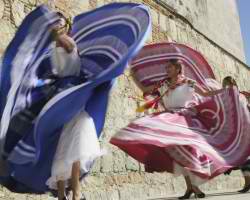If you thought Cinco de Mayo was a celebration of Mexico’s independence — you’d be thinking incorrectly.
Like Saint Patrick’s Day, a religious holiday in Ireland but largely a secular celebration in the United States, Cinco de Mayo ( May 5th) has different connotations north and south of the U.S.-Mexico border.
Cinco de Mayo is not Mexico’s version of the Fourth of July. Mexico’s Independence Day is actually Sept. 16.
On the U.S. side, Cinco de Mayo has morphed over the years into a hybrid celebration of Mexican-American culture.
Cinco de Mayo actually commemorates the Battle of Puebla on May 5, 1862, where an underdog, poorly equipped army led by Texas-born General Ignacio Zaragoza surprisingly triumphed over a much larger and better equipped French force that attacked Puebla de Los Angeles, a small town in east-central Mexico. The battle lasted from daybreak to early evening. When the French finally retreated they had lost nearly 500 soldiers. Fewer than 100 Mexicans had been killed.
Although not a major strategic win in the overall war against the French, Zaragoza’s success at Puebla represented a great symbolic victory for the Mexican government and bolstered the resistance movement, which was ultimately victorious.
The observance of Mexican independence has its roots in the French occupation of Mexico, after the Mexican-American War of 1846-48 and The Reform War of 1858-61. The Reform War was a civil war pitting those favoring freedom of religion and separation of church and state, from those wanting a stronger bond between the Roman Catholic Church and the Mexican state.
Mexico’s Sept. 16 independence Day commemorates Grito de Dolores (Cry of Dolores in English) in 1810, which initiated Mexico’s war of independence from Spain. The cry was uttered by Miguel Hidalgo y Costilla, parish priest of Doloros. Hidalgo was involved in a rebellion against Mexico’s Spanish overlords exhorting them to revolt in a fiery speech stating “Long live Our Lady of Guadalupe (Indian faith symbol), death to the bad government, death to the Spaniards.”
Hidalgo’s “mob army” was ultimately suppressed and he was captured and executed on July 31, 1811. But his cry became his nation’s cry of independence.
Mexico’s independence would not be effectively declared from Spain in the Declaration of Independence of the Mexican Empire until September 28, 1821, after a decade of war.












